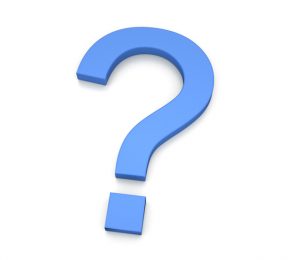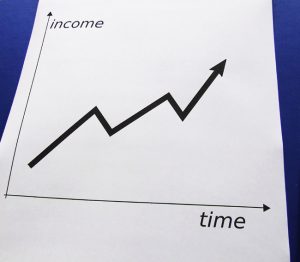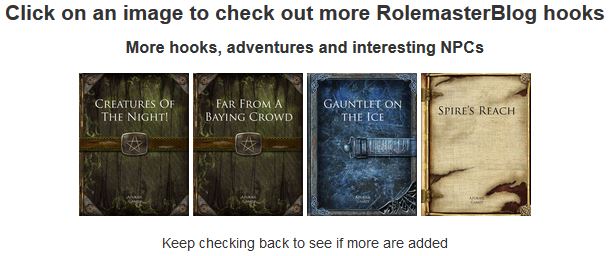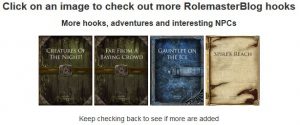This is Part 2 of an article series on self publishing in the RPG industry. Also see Part 1 and Part 3.
Setting the Price

Price is a tricky one. There is a temptation – which I fell into – of undercutting the competition, but in the long run, this really doesn’t help anyone. OneBookShelf (OBS) tend to say don’t sell for under $1 (although $0.99 can help sales and makes little realistic difference). If the supplement includes artwork, especially artwork which you are unlikely to be able to reuse but costs money to buy, this can mean that a higher selling price is necessary.
OneBookShelf also allows for Pay What You Want supplements, where the purchaser chooses what price they think the supplement is worth. I prefer doing this to out and out free. Naturally, the price most choose is nothing, but some may come back and then pay more than you would have priced the supplement for. Plus, these customers may also be added to your mailing list, a potential future source of income.
Some publishers offer most, or all, of their material for free. Often, this is because they have a Patreon campaign that generates the money in another way.
Where to Actually Sell
 The OneBookShelf network is by far the biggest player in the niche. There is also the Paizo store, the Open Gaming Store and Warehouse 23 from Steve Jackson Games. Amazon, through Kindle and CreateSpace, is another. There are also other more specialised sites such as Fantasy Grounds and Roll20, which sell material for tabletop software systems, which tend to require knowledge of how to create or adapt material to these. Such content can also be sold through OBS as well. OBS do offer a 5% exclusivity bonus, if you only sell on their sites, but many of the bigger players cover multiple markets, so it’s likely that there’s a definite advantage to doing so, if you can. There are other print on demand publishers, such as Lulu too.
The OneBookShelf network is by far the biggest player in the niche. There is also the Paizo store, the Open Gaming Store and Warehouse 23 from Steve Jackson Games. Amazon, through Kindle and CreateSpace, is another. There are also other more specialised sites such as Fantasy Grounds and Roll20, which sell material for tabletop software systems, which tend to require knowledge of how to create or adapt material to these. Such content can also be sold through OBS as well. OBS do offer a 5% exclusivity bonus, if you only sell on their sites, but many of the bigger players cover multiple markets, so it’s likely that there’s a definite advantage to doing so, if you can. There are other print on demand publishers, such as Lulu too.
A final option is a store on your own site. Although this will likely give the highest percentage – after all, you won’t need to pay a percentage to another store’s owner – it can also be the trickiest to do.
Sales & Marketing

OBS has tracking codes, which they call source codes. These can be used to track where a sale came from (if the person creating a link used them; the codes you see in a marketing source report are not solely the ones you create yourself, but all relevant ones), although these do get overwritten when another is clicked.
My highest sales numbers come from the various OBS internal codes combined, especially from the front page and also purchased (these, being listed as FrontPage and also_purchased, are very easy to spot); however, over the past year OBS changed the ranking algorithm so that it ranks by money made from a supplement, not number of supplements sold. This generally benefits the bigger publishers – who tend to create more expensive products; smaller publishers who make the occasional pricey supplement also benefit – and OBS, who make more money from larger sales, but it’s not so good for the smaller publisher who has lots of pocket-money priced items. This was notable in the past couple of OBS sales, when products were selling in numbers of about a tenth of what they did in similar sales last year, because they were no longer at the top of the sales listings.
My next major source of sales is through emails to my mailing list through the OBS email system. I send out emails when new products are released, and I give discounts on some new releases, to keep people interested in subscribing to the list, and link to other products and sales as well if they are appropriate. I used to always send an email out at the start of a sale as well, but just prior to the Black Friday/Cyber Monday sale OBS essentially asked publishers not to do this, as they had already notified customers (although this was stated before the customers were actually notified). Not that surprising, because it wasn’t unknown to get a lot of emails from many different publishers, but telling my customers and potential customers about site sales always generated product sales, and a generic one by OBS does not have the same effect.
The footers on the OBS sites can be used to promote similar items, and this is probably the next largest source of combined sales. Not every product has a footer, as yet, but I add footers with other relevant products when I see some that are related.
I also sell a few through my own site, although this doesn’t sell that many as yet; it probably pays for the domain name at best (the hosting is basically paid for elsewhere). The site needs more useful content in order to attract people who then might click through and purchase products.
The sales generated by social media are harder to quantify. I only know of one sale that came through social media, Facebook in its case, but that customer purchased about 50 products! Update: I have just started getting results from Pinterest after quite a few years of posting on the site. My pins have just started being reposted a lot (both my own supplements and reviews of other peoples) and this has resulted in an uptick in views and a number of definite sales.
Another area I have got a few sales from is ads in products themselves. I’ve added links to related products in the back of a few recent supplements, which can also fill up empty space! This has generated a few sales, but nothing significant as yet.
Probably the most important lesson to take from the source codes is to actually use them, every time you create a link.



I have taken to putting a linked list of all related supplements just inside the front cover, just as an author may list their other books. That generates a lot of secondary sales I have found.
I released 14 adventure hooks/outlines earlier this year, very similar to the 50 in 50 ones and priced them as free for the first week and then $0.99 there after. I am not a fan of free, if I don’t value my work then who will?
Right now I am releasing another series of hooks/outlines but without the free week. I hope to be able to do a like for like comparison as to whether a loss leader generates more leads than full price products.
With my own game the first edition was 2 books. A core rules and a GMs resource. I priced each at $4.99. The second edition I merged both books into a single thicker book and added slightly more content, more art and gave a print on demand option. That sells for $9.99. The $9.99 edition sells better than the $4.99 version. The pdf versions have exactly the same production costs, $0.00 so is making more money.
Having my own game also means that I have a closed audience for supplements I have created for it.
In annother experiment I released an nearly identical hook/outline as multiple versions. The differences being one was generic with no monster stats, one had 5e monsters and references to the rules, one was for my game again with monsters and rule references and another was for the OpenD6 system and a RM version.
The 5e version has not sold a single copy, I think it was just drowned out amongst the millions of 5e supplements out there.
The best selling was the generic/system neutral one.
I also sell on Kindle. I have sold copies of my game book as printed editions on Amazon but no one has bought any of the fanzine issues. On the other hand people with kindle unlimited are reading the fanzine for free so I am earning some money that way. I am getting just £0.12 a month at the moment from people who are reading a book I sell for $0.99 on OBS or $3.99 in print. Kindle Unlimited does not seem like a good deal for writers.
I haven’t tried a list of related products yet, only images at the back. Your way sounds like it’s more effective, more obvious that the links are links and easier to do as well.
Sometimes free seems to work for publishers, those that aren’t getting their income from Patreon anyway. Adventures in Filbar releases one free supplement a month as a sample. I’d still rather do PWYW, especially as some customers have decided that the supplements were worth $2. Of course, many more pick them up for free and I have quite a few 1 cent sales as well.
Having a fan base for your own system, however small it may be to start with, is always good and it can always grow. Having regular supplement releases for it, as we’ve mentioned before regarding ICE, is also a good idea.
The generic version of Stand By Me was included in the OBS customer newsletter last week. I was curious to see whether you’d had a boost in sales from that. The source codes appear to be newsletter_freebies_mfr, newsletter_new and newsletter_new_thumb.
I haven’t gone to Kindle yet, or outside the OBS network. I think I’ll be launching in quite a few other places next year. I do have three unrelated Kindle ebooks, that don’t earn much, and mostly from page reads. Talking to someone else who published on Kindle, he was making noticeable money from page reads, but he also had quite a lot of, short, books on the site.
I have had nothing from the newsletter which was disappointing, but being mentioned is a good thing regardless.
It is a shame that there wasn’t any direct return from the newsletter. I had wondered if it was worth trying to launch new releases at the right time to improve their chances of being included, but perhaps not.
That is an interesting idea. When you set up a new title you have the option to select an ‘available from’ date so whenever you set it up you could schedule it to optimal dates.
Regarding the 5E version, have you thought of tweaking it a bit and incorporating it into the Forgotten Realms then publishing a new version on Dungeon Masters Guild?
I did edit the text and publish it on DMs Guild.
I have released another one this week with an NPC from Chult as a really cool local hero character and zero interest again.
Coincidentally the one supplement I have made for the Traveller Aid Society sells really well as does the one 7th Sea supplement. Both of those are smaller communities and the rate of releases is slower. I think you get more homepage exposure with those.
Hmm. I know that there is a demand for DMG material, but you’re right about the community being large, with a fast rate of release – many thousands of supplements.
I wonder what could be done to boost interest in products on DMG?
I think it is not what to do but more what to create.
I think that DMG buyers are more likely to create their own adventures or use bought adventure paths rather than buy indie adventures of unknown quality.
I think it would be worth investigating what has made metal status in DMG and then create more of the same. Right now I do not think it is worth the effort. If I have an adventure ready to roll out then it is little or no effort to tweak it to fit into the forgotten realms and add 5e monster stats. If I get a sale, then great, if not then nothing is lost.
I purchased this: https://www.dmsguild.com/product/184296/5MWD-Presents-Treasure–Art-Objects
It’s now Platinum; when I bought it it was Gold. At $0.50 it’s a decent item. I also don’t see why it’s been published through DMG – there is one mention of beholders and one of the Dungeon Masters Guide, but other than that it is system-neutral.
This week I am publishing an add-on for a Pathfinder adventure path. Add-ons for 5E adventures might work (I don’t know if this one will be successful yet of course).
Yes, I thought add-ons to published adventure paths could be good but as I do not own any of the adventure paths, making them work would be more investment in both time and money than to be honest I am prepared to make at present. My heart does not lie in the land of 5e.
What I do think would work would be an indie developers monthly magazine. A mix of adventure writing articles, reviews of resources, reprints of page layout tutorials for scribus or indesign and so on.
I’ve picked up three Pathfinder adventure paths, during sales, but it will be some time before I cover the cost – and the time spent reading them – with add-ons for them. So time and money is definitely a consideration. I admit I haven’t seen any 5E adventure paths as yet.
I think there’s a definite market for indie development material. Including those related to more traditional business skills, which tend to be lacking in the field. I purchased this: http://www.rpgnow.com/product/138716/OBS-Footer-Code-for-OneBookShelf-Publishers (the publisher has a few others, including two free audios). I could more than likely have figured it out myself, but I thought I’d save time, and this month alone I’ve had many more sales from using footers than it cost.